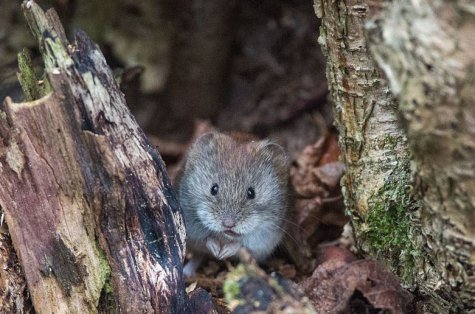Those who cannot be counted
Photo Arne Ader
Translation Liis
Bank vole
Bank vole Leethiir Myodes glareolus previously Clethrionomys glareolus
There is no way to count them but surely the bank voles, of the hamster family, are the most numerous mammals in Estonia. On top of that, the species has a cyclic variation in abundance with so-called ”mouse years” every third or fourth year (but it is no rule, and sometimes is not particularly apparent).
Large numbers of prey animals significantly affect the breeding success and numbers of predatory mammals as well as birds of prey in the food chain. In the web cameras we have noted the feeding of the offspring with different prey animals over the years. Tawny owls have brought mice or frogs as well as earthworms to their chicks in different years: what happens to be available in nature at the time.
In the fur coat of bank voles we can see reddish brown on the back, greyish on the belly. A characteristic feature is the white or light grey colour of the back of the ears. Body length 8 to 10 centimetres, the length of the tail about half the body length. The weight of course depends on age, varying from 18 grams to twice that amount. Four toes on the forelegs, five on the hind legs.
The forest dwellers also colonize forest clearings, thickets, sometimes city parks too. Burrow systems are set up between tree roots (the nests are below the freezing level); rubbish heaps are used, they move in mole tunnels, sometimes skilled climbers even use bird nestboxes; in winter they create paths under the snow cover. Grasslands are evaded.
They are more active in the dark, but meeting bank voles in daytime is not unusual. On the ground they move by leaps (well visible when the little creature crosses a forest path). Mostly herbivorous animals, also active in trees as skilled climbers. There are no longer many green plants left, so they feed on seeds and nuts; there was a dearth of acorns this year and mushrooms were plagued by drought. All the above are part of their diet, plus a small amount of insects and invertebrates. It has been noted that they also collect winter stores.
To stay alive, bank voles have to eat at least 10 times a day; the daily food need of a healthy animal amounts to 80% of the body weight. In order to keep alive and to escape threats they must be constantly active.
Bank voles do not breed in winter; more about that in early spring.









